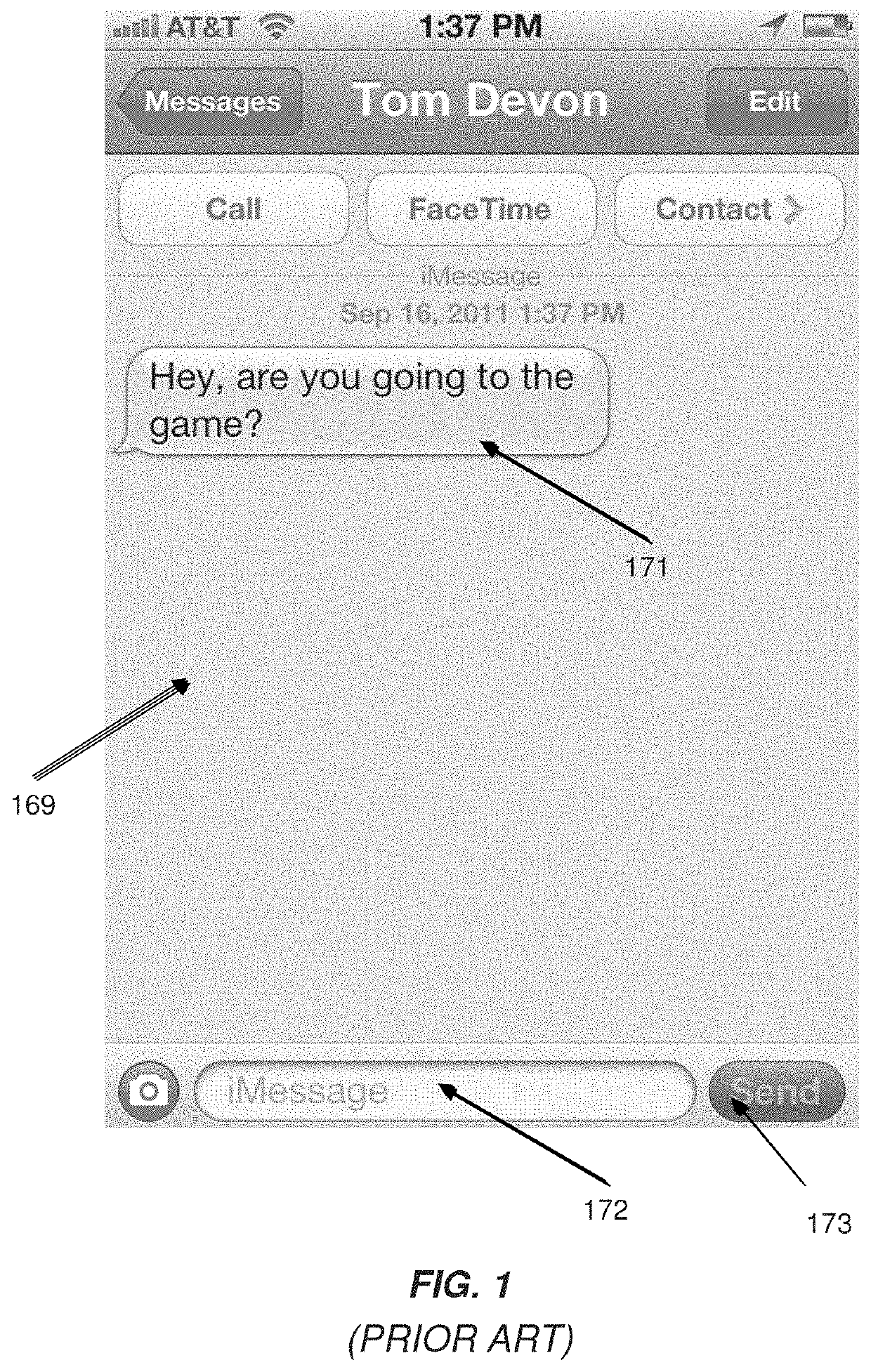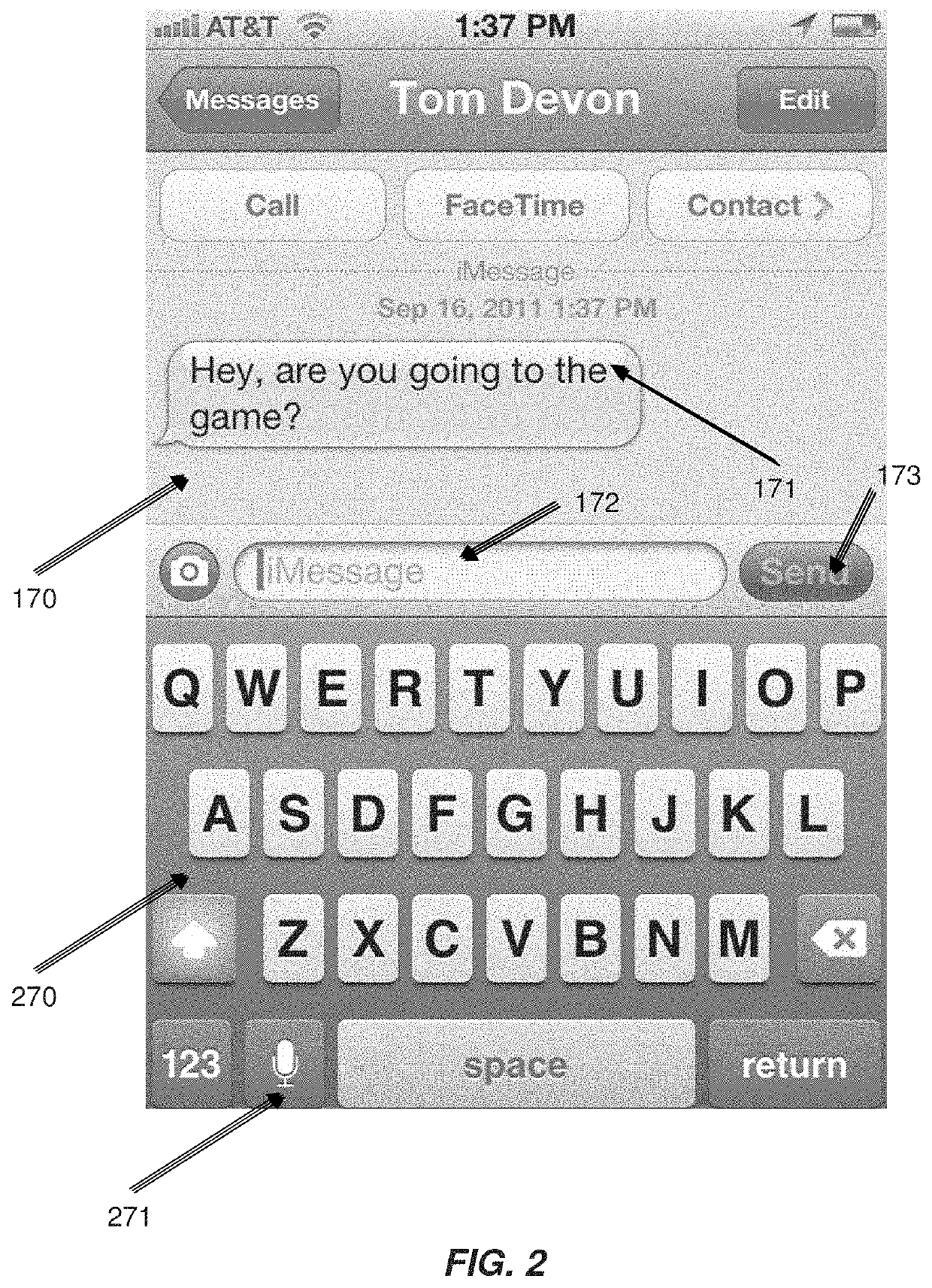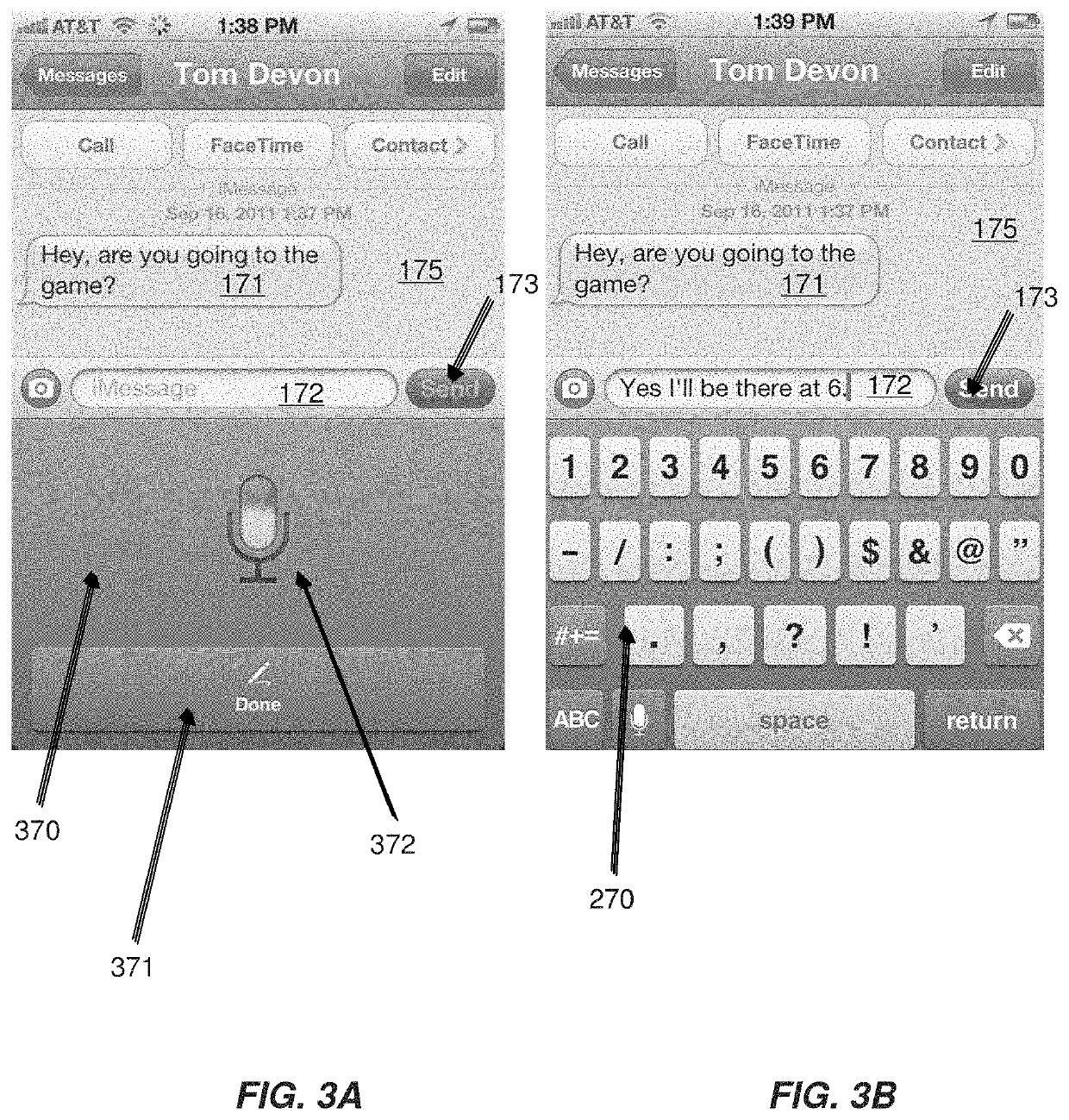[0009]According to various embodiments of the present invention, a user interface for a system such as a virtual assistant is automatically adapted for hands-free use. A hands-free context is detected via automatic or manual means, and the system adapts various stages of a complex interactive system to modify the user experience to reflect the particular limitations of such a context. The system of the present invention thus allows for a single implementation of a virtual assistant or other complex system to dynamically offer user interface elements and to alter user interface behavior to allow hands-free use without compromising the user experience of the same system for hands-on use.
[0010]For example, in various embodiments, the system of the present invention provides mechanisms for adjusting the operation of a virtual assistant so that it provides output in a manner that allows users to complete their tasks without having to read details on a screen. Furthermore, in various embodiments, the virtual assistant can provide mechanisms for receiving spoken input as an alternative to reading, tapping, clicking, typing, or performing other functions often achieved using a graphical user interface.
[0011]In various embodiments, the system of the present invention provides underlying functionality that is identical to (or that approximates) that of a conventional graphical user interface, while allowing for the particular requirements and limitations associated with a hands-free context. More generally, the system of the present invention allows core functionality to remain substantially the same, while facilitating operation in a hands-free context. In some embodiments, systems built according to the techniques of the present invention allow users to freely choose between hands-free mode and conventional (“hands-on”) mode, in some cases within a single session. For example, the same interface can be made adaptable to both an office environment and a moving vehicle, with the system dynamically making the necessary changes to user interface behavior as the environment changes.
[0014]Actions can be performed, for example, by activating and / or interfacing with any applications or services that may be available on an electronic device, as well as services that are available over an electronic network such as the Internet. In various embodiments, such activation of external services can be performed via application programming interfaces (APIs) or by any other suitable mechanism(s). In this manner, a virtual assistant implemented according to various embodiments of the present invention can provide a hands-free usage environment for many different applications and functions of an electronic device, and with respect to services that may be available over the Internet. As described in the above-referenced related application, the use of such a virtual assistant can relieve the user of the burden of learning what functionality may be available on the device and on web-connected services, how to interface with such services to get what he or she wants, and how to interpret the output received from such services; rather, the assistant of the present invention can act as a go-between between the user and such diverse services.
[0015]In addition, in various embodiments, the virtual assistant of the present invention provides a conversational interface that the user may find more intuitive and less burdensome than conventional graphical user interfaces. The user can engage in a form of conversational dialog with the assistant using any of a number of available input and output mechanisms, depending in part on whether a hands-free or hands-on context is active. Examples of such input and output mechanisms include, without limitation, speech, graphical user interfaces (buttons and links), text entry, and the like. The system can be implemented using any of a number of different platforms, such as device APIs, the web, email, and the like, or any combination thereof. Requests for additional input can be presented to the user in the context of a conversation presented in an auditory and / or visual manner. Short and long term memory can be engaged so that user input can be interpreted in proper context given previous events and communications within a given session, as well as historical and profile information about the user.
[0016]In various embodiments, the virtual assistant of the present invention can control various features and operations of an electronic device. For example, the virtual assistant can call services that interface with functionality and applications on a device via APIs or by other means, to perform functions and operations that might otherwise be initiated using a conventional user interface on the device. Such functions and operations may include, for example, setting an alarm, making a telephone call, sending a text message or email message, adding a calendar event, and the like. Such functions and operations may be performed as add-on functions in the context of a conversational dialog between a user and the assistant. Such functions and operations can be specified by the user in the context of such a dialog, or they may be automatically performed based on the context of the dialog. One skilled in the art will recognize that the assistant can thereby be used as a mechanism for initiating and controlling various operations on the electronic device. By collecting contextual evidence that contributes to inferences about the user's current situation, and by adjusting operation of the user interface accordingly, the system of the present invention is able to present mechanisms for enabling hands-free operation of a virtual assistant to implement such a mechanism for controlling the device.
 Login to View More
Login to View More  Login to View More
Login to View More 


